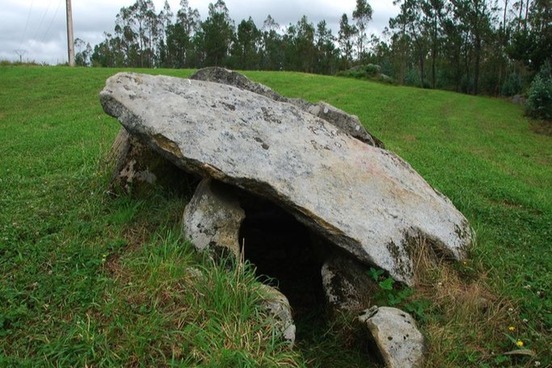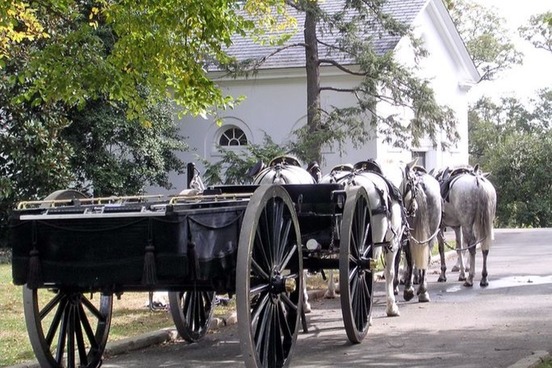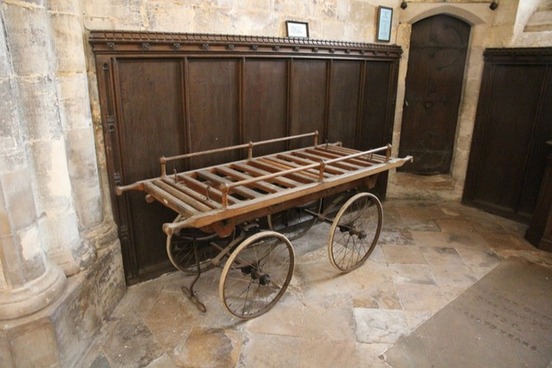
Cairn
A cairn is a heap of stones that is conical or pyramidal in shape and that can range from a carefully stacked tower to a mountain. Cairns can be seen at the beach or randomly piled up on the unbeaten path of a hiking trail. The smaller cairns encountered today are often done out of idleness, but, historically, they have significance as the boundaries of a trail or as landmarks for voyagers or travelers. Additionally, they are used to mark burial sites or constructed as memorials or monuments having personal or spiritual significance, so maybe think twice about disturbing one.
Burial cairns date primarily from the Neolithic Period and the Early Bronze Age, and they are sometimes referred to as a barrow (from Old English beorg, meaning "mountain") or tumulus (akin to Latin tumēre, "to swell"), both of which designate a mound of stones or earth over the remains of the dead. Various members of a family or clan might be uncovered when excavating a cairn, or it might be a single important individual, such as a chief or leader. In either case, the body or bodies would normally be found in a vault (again, do not disturb).
The tradition of building cairns goes back many centuries and across continents. The word cairn, however, is a 15th-century English borrowing of Scottish Gaelic carn, referring to a heap of stones. The word may have also meant "horn" in the past, influenced by the Gaulish karn-on. If that is the case, the word would have the connotation of "a cairn on a mountaintop" ("a horn topping the mountain"). But this is etymological digging—not documented fact.
A catafalque is an ornate structure used in funerals to support a casket or for the lying in state of the body. It is often used for royalty and personages of distinction and is normally set up in a historic public hall, such as Westminster Hall in London or the Capitol Rotunda in Washington, D.C.
The word catafalque is a 17th century arrival that is derived from Italian catafalco, which itself is formed from Vulgar Latin catafalicum, meaning "scaffold." The Latinate derivative has an irregular formation: the prefix cata- (influenced by Greek kata-) should signify "down" as in cataract, meaning "waterfall" or "downpour"—but it doesn't—and the base word, fala, means "siege tower." Linguistically, the path to the word's common meaning of "an ornamental structure sometimes used in funerals for the lying in state of the body" is muddied, but fala seems to be the scaffolding that allows for etymological rationalization to proceed.
In the 19th century, the catafalque went mobile and was modified to include an open hearse or funeral car. George Elliot in her 1876 novel Daniel Deronda made light of the dark catafalque by suggesting that a "black and yellow catafalque" was known as "the best bed."

Boneyard
Boneyard originated in the early 19th century as a pretty literal name for the place where the bones of dead horses or other domestic animals are collected for subsequent use—nowadays, bone might be repurposed in construction materials or fertilizer.
In 1866, Mark Twain (in a letter from Hawaii, of all places) generalized the term as a synonym of cemetery or graveyard: "It's one of them infernal old ancient graveyards," he writes. "I suppose you didn't know that boneyard was there." People took a liking to such use—perhaps finding it a humorously pleasant alternative to the rather grim cemetery. We accept that boneyard is a humorous substitute for cemetery; however, cemetery itself is restful: it comes from the Greek word koimētērion, meaning "sleeping chamber."
In short time, boneyard came to mean a storage space or scrapyard for any "dead" items (ranging from computers and electronic equipment to defunct trains, planes, and automobiles) that could be cannibalized for parts. Beginning circa the mid-1800s, proposed legislation might have also found its way to the boneyard.
He implored the House at once to dispose of the bill without sending it to the bone-yard of nearly all the good laws which had been proposed in twenty-five years past.
— The Daily Union (Washington, D.C.), 24 Dec. 1850
A similar term from British English is knacker's yard. A knacker is a buyer of worn-out domestic animals or their carcasses for use as animal food or fertilizer. The origin of knacker is not known for sure, but it may be a dialectal word for "saddlemaker." English author George Orwell introduced the profession of the knacker to America and the world in his 1945 anti-Soviet satirical fable Animal Farm, in which the workhorse Boxer is picked up by the knacker:
"Alfred Simmonds, Horse Slaughterer and Glue Boiler, Willingdon. Dealer in Hides and Bone-Meal. Kennels Supplied." Do you not understand what that means? They are taking Boxer to the knacker's!

Dolmen
A dolmen is a prehistoric monument consisting of two or more upright stones supporting a horizontal stone slab. Such structures have been found throughout the world—most notably in Britain and France. In most cases, it has been discovered that dolmens serve as burial markers.
After a summer consisting of drought and two extreme heatwaves, a 7,000-year-old monument in Spain has been exposed for the first time in 50 years after water levels dropped in the Valdecañas Reservoir. The circle of over 100 rocks called the Dolmen of Guadalperal (also known as the “Spanish Stonehenge”) is now entirely exposed.
— Audrey Farnsworth, Fodor’s Travel, 30 Sept. 2019
The name dolmen is a 19th-century borrowing of a French word that is believed to be a modification of Cornish tolmen, from tol (meaning "hole") and men ("stone"), which translates as "hole of stone."
The "holes" of dolmens vary in size and shape. Some are the size of a cubbyhole, while others are tall and long enough for people to stand and even walk around in. Along with human remains, such artifacts as pottery, animal bones, and hearths have been found at dolmen sites, indicating that they were also a bittersweet center of activity.
Bier goes back to the Germanic root reflected in the English verb bear, meaning "to carry." Originally, it referred to any framework (such as a litter, stretcher, or handbarrow) for carrying a person before it carried meaning as the word for the stand on which a corpse or coffin is placed or carried to the grave. The modern (relatively speaking, since it dates to the early 1600s) spelling is influenced by the French form bière.
The burial costs listed in the Codex Foster – under a receipt containing wax and lemon juice – includes expenses for a doctor, sugar, wax for the candles, bier with a cross, four priests and four altar boys, the bells and the gravediggers. It all costs a very tidy sum of 123 soldi; a not-insignificant amount.
— Erol Araf, The Jerusalem Post, 16 Oct. 2019
Weavers might also recognize bier as having the specialized meaning denoting a group of 40 threads into which the threads of a warp (which refers to a series threads worked in a loom) are divided. A variant spelling of that sense of the word is beer. And, yes, in German Bier is the word for the alcoholic drink made from malt and hops that in English is beer, but it's unrelated.

Cromlech
Cromlech is an older synonym of dolmen; however, it has the unique meaning of "a circle of monoliths usually enclosing a dolmen or mound."
Llanglydwen resident Eurfyl Lewis said sites like the ancient Neolithic cromlech, Gwâl y Filiast, which is near the old track's route, would be a draw for visitors.
— BBC News (bbc.com), 21 Jan. 2019
The erection and design of a cromlech is mystifying, but the questions of why one was built and where it was built are more so. There are a few theories as to its purpose: one contending that the cromlech is a sacrificial altar; another that it is a burial monument; and, lastly, that it is a structure designed for astronomical purposes. Whatever their original purpose, they represent the ingenuity and engineering capabilities of humankind, and they are awe-inspiring.
Cromlech is derived from Welsh and is a combination of crom, the feminine form of crwm (meaning "bent"), and llech ("flat slate").

Columbarium
A columbarium is a sepulchral structure lined with many small recesses (or cubbyholes) for urns—or a single recess in such a structure. The word is derived from the Latin name for the avian dove or pigeon, columba, and it originally referred to a dovecote. It later acquired its more common meaning by association. Both senses of the word were borrowed into English during the 19th century.
Columbaria (the Latinate plural form) were common during the early Roman Empire, when cremation was a traditional practice, and typically they were rectangular structures built around an open court, the walls of which containing the niches for the urns, and were often elaborately painted and decorated. In time, inhumation replaced inurnment, and columbaria became obsolete. They did not reappear until the 20th-century revival of cremation, and they are now often found in mausoleums or churches.

Lych-gate
If you approach an old church, you might enter the churchyard through a gatehouse, or—by name since the 15th century—a lych-gate (also spelled lich-gate). The lych-gate has the epithet "corpse gate" because it is the roofed gatehouse in a churchyard under which a bier (the platform for a coffin having no vacancy or for a corpse about to find its permanent residency) rests during the introductory part of the burial service. The formal name references the dead: lych (or lich) is from Old English līc, meaning "body" or "corpse." The most common construction of a lych-gate is a simple shed that is covered by a roof of tiles or thatch.
A lych gate was erected in his honour at St John the Baptist Church, funded by the community and his regiment, but after decades it had deteriorated to the point where it had to be removed.
— Paul Whitehouse, The Yorkshire Post, 21 Oct. 2019

Pallbearer
The pall in pallbearer originally refers to a cloak or mantle. The name for the covering is from Latin pallium, which is used to designate the usually white (sometimes purple) woolen band that is worn over the chasuble by a pope or archbishop as a symbol of full episcopal authority.
In English, pall came to signify the cover placed over the chalice during the Christian sacrament of the Eucharist or to the cloth spread on the altar; it also came to denote the cloth draped over a coffin at a funeral, as well as the coffin itself. It's from this latter use that the term pallbearer was given life in the early 18th century from the custom of holding the corners and edges of the pall as the coffin was carried to the cemetery.

Cist
Cist originally refers to a prehistoric burial chamber—usually made of stone or a hollowed-out tree—that holds either the body of the deceased or his or her ashes after cremation; additionally, a cist serves as a storage place for sacred objects. Cist has also been used in a more general sense to refer to the stone burial place itself, especially one built in the form of a dolmen with several upright stone slabs supporting a large capstone.
A stone-lined box capped with a large, flat stone, the cist was found just below the surface of the ground, and is estimated to be 3,500 years old. No human remains have been found in the cist to date, but archaeologist Pete Higgins said careful excavation may detect some pieces of bone.
— Archaeology, 8 May 2019
The name of the burial chamber ultimately descends from Latin cist, meaning "box" or "basket," and it was also applied to the roofed storage pits found in the southwestern United States in Basket Maker sites. (The term Basket Maker refers to the prehistoric Native American civilization that once occupied the area that is now the southwestern U.S.)

Exequy
Exequy refers to a funeral rite or ceremony, and sometimes it can point a skeletal finger to a funeral procession. It is most often found in its plural form.
I'm a little ashamed to admit that, in the days when I used to be sent by the newsroom to report on big ceremonials, I once gatecrashed the funeral of Lew Grade. Security was tight at the exequies of the great TV mogul, and as I drew near to the crematorium in my black coat, I doubted I could bluff my way in. But as I approached the invitation-checkers, an odd thing happened. An icy gust of wind scythed against my face (it was mid-December) and a salty tear sprang from my eye and coursed down my cheek. The bouncer looked at my stricken face and evident lachrymosity, marked me down as a sentimental family retainer, and let me through.
— John Walsh, The Independent, 27 Mar. 2013
The word enters English in the 14th century and is based on both French and Latin: French exequies and Latin exiquiae. The Latinate is the ultimate source, however, and it is derived from the verb exequi, meaning "to follow or perform," or, in other words, "to execute," which, in this case, implies performing the requirements of a funeral or carrying out a burial.







